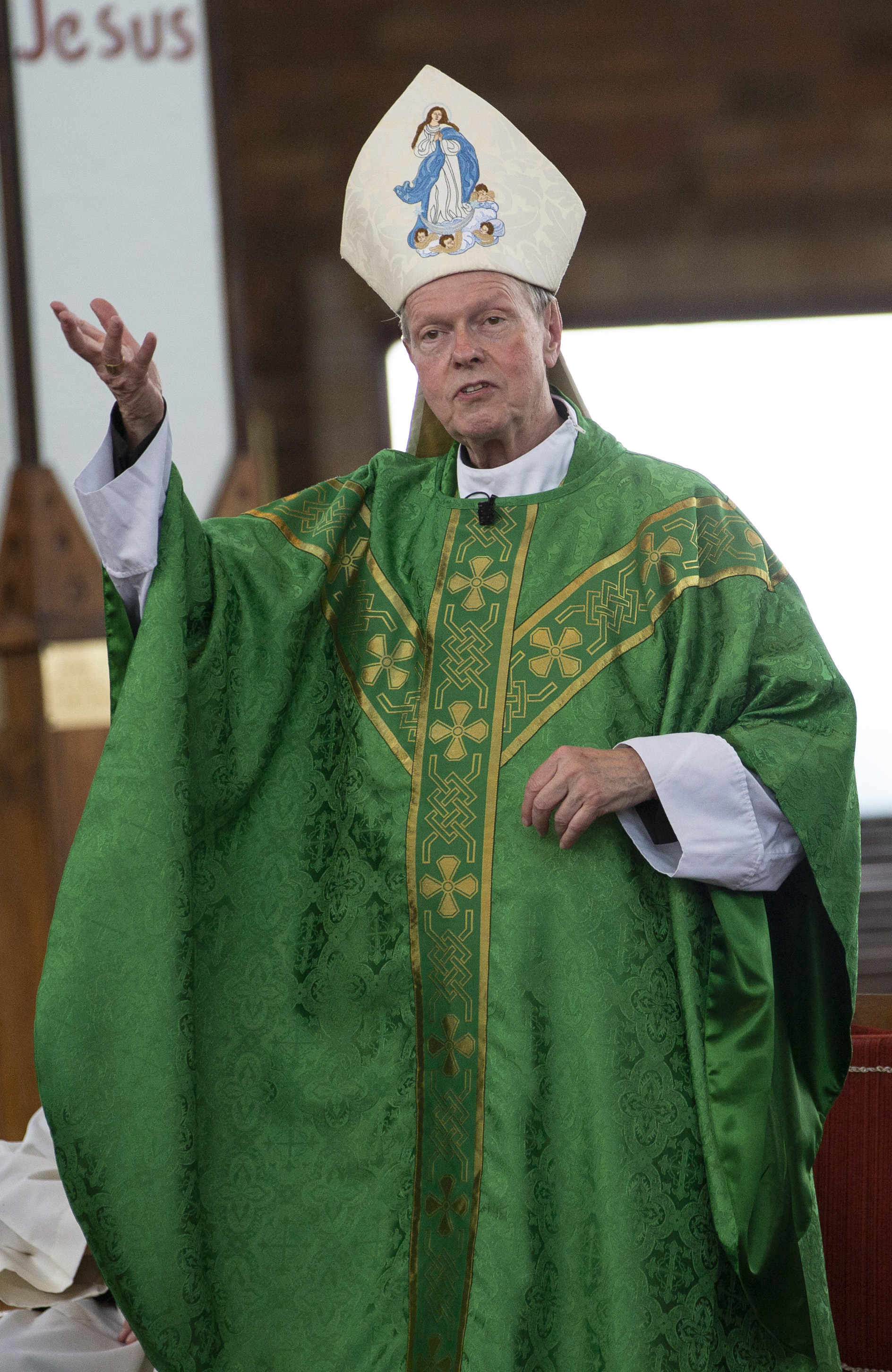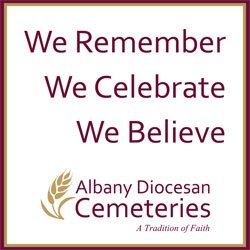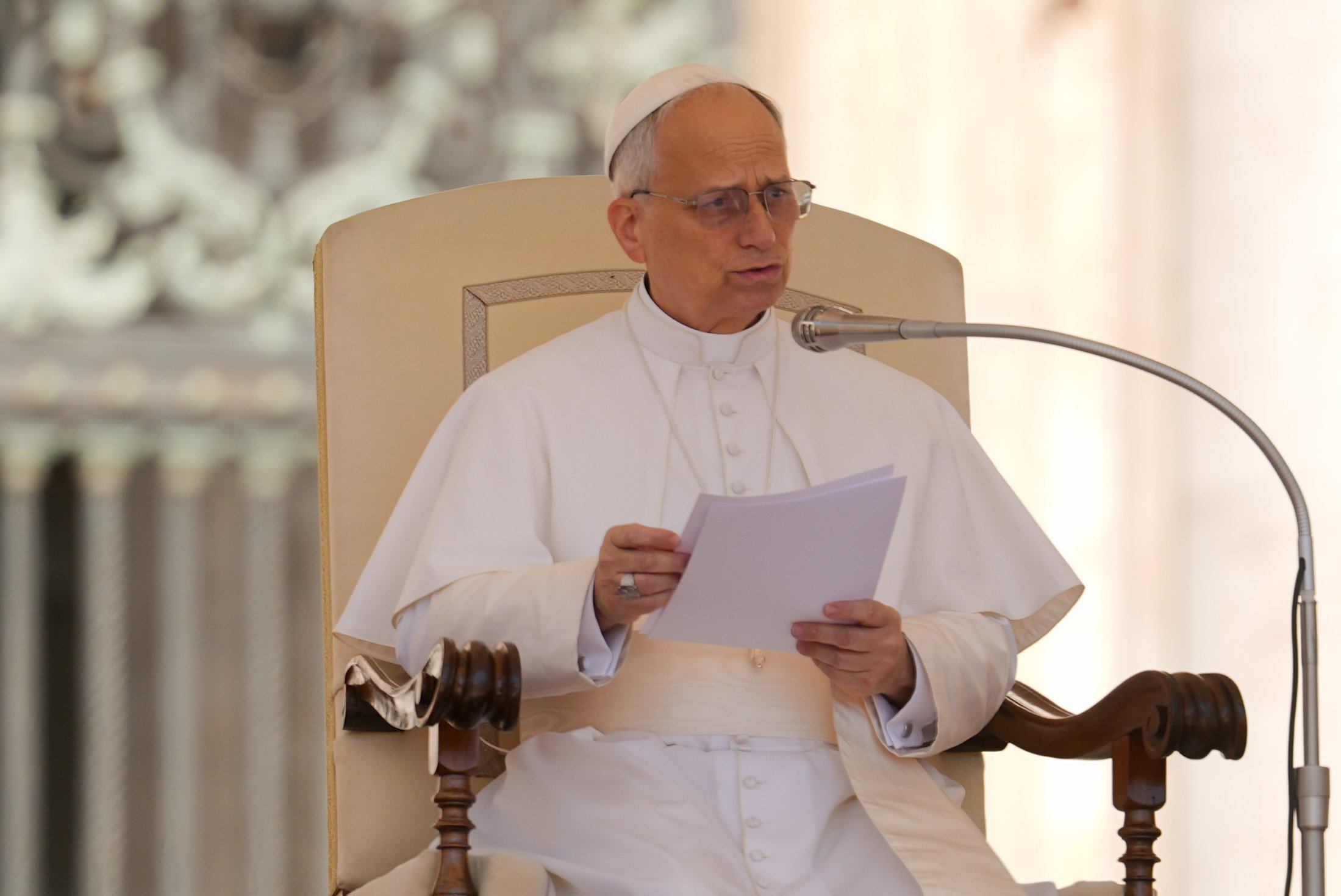April 2, 2025 at 10:19 a.m.
SEASONAL SOUNDS
As a quiet hum reverberated throughout the pews, a calm fell over the room.
Every Wednesday, the choir of Christ Our Light Church in Loudonville gathers in the parish worship space behind the altar for weekly practice. There was the usual shuffling of song sheets, the warm-up and quick updates, but in addition to the usual list of songs, the choir was also practicing for their “Sung Vespers in the Spirit of Taizé” that was held on March 31.
While the program was performed in a different ambiance — the worship space dimly lit, some candles for soft lighting — there was something especially tender about that Wednesday evening practice. Maybe it was the orange evening light cascading through the stained glass windows, or maybe it was the trickling water of the baptismal font as gentle white noise. But at its core, it was the Taizé chants.
The choir started their practice with “Oh Lord, Hear My Prayer.” It’s only a handful of lines that are sung and repeated in a cycle, but after a few minutes, there’s a gentle flow to the music that organically draws one into a trance-like state.
Taizé (pronounced “teh-ZAY”) is not anything intricate, and it was designed to be that way. The chorus is accessible and meditative, repetitive and rhythmic. Each chant acts as a vehicle for sung prayer and a uniting base for different faiths and languages to come together as one body.
This chanting, musical practice was born from the Taizé community, an ecumenical monastic group founded in the 1940s in Taizé, France, with the hopes of fostering reconciliation and unity among Christians and other denominations of faith.
Today, the program is offered in Catholic and Christian churches around the globe — including here in Albany: Christ Our Light and St. Clare’s offer a program on alternating Mondays during Lent; the last one will be on Monday, April 7, at 6:30 p.m. at St. Clare’s. The Parish of Mater Christi in Albany is also offering a Lenten Vespers Service in the musical style of Taizé on Friday, April 11, at 7 p.m., and First Presbyterian Church in Albany offers special Taizé services on Wednesday evenings during Lent.
These programs often pop up in bulletins around Lent and Advent, times when the faithful are called to prepare for Christmas or Easter. The organic nature of Taizé’s introspective and meditative style is often a good catalyst this time of year for the Catholics and Christians whose faith might be impacted by the journeys we take during the Lent and Advent seasons.
Justine Rodriguez, director of music for Christ Our Light, offers the program during Lent when she finds the faithful are more reflective.
“Going through the 40 days of Lent and making an effort to change our hearts … that’s a good time to use it for me — and the same time for the preparation for Advent,” she said. “But you can certainly use it at any point of the year, anytime when you need a little quiet time to be still and listen to God.”
Roger Louis Schutz-Marsauche, then a Swiss Reformed minister, founded the Taizé community out of a similar need to listen to God’s call. Brother Roger, as he is now known, was searching for what it meant to truly follow the Scriptures while navigating the impacts of World War II, trying to find direction amongst it all.
In a letter to a friend, Brother Roger wrote of his desire to “alleviate as much misery” as possible. Soon after, in July 1940, he left his home country of Switzerland to join war-torn France in search of a house to buy and a way to help those in need.
His efforts grew into a community of approximately 100 brothers living in Taizé, France, today. Every year, thousands of pilgrims from across the world — particularly young adults — go on retreat there, attracted by the group’s call to prayer, community life, and ecumenical support of peace and justice.
Anthony Leva, music director for Mater Christi, found that without the background of Taizé’s history, the practice is sometimes misunderstood by Catholics as something that doesn’t belong in the church.
“There is a lot of misinformation and misconceptions,” he said. “There are hymns we sing often at Mass — ‘Eat this Bread,’ ‘Jesus Remember Me’ — there are a lot of hymns that are from the Taizé tradition.”
Rodriguez, who has offered the program at other parishes she’s worked with, said the service is a way Catholics can be “ecumenical and welcoming, even if something isn’t necessarily part of our Mass.”
“There are a lot of other things we do in churches that are evangelization — maybe it’s adoration, or Stations of the Cross, or Taizé — these are things that are part of other faith traditions, too, that maybe aren’t exclusively ours as Catholics, but certainly are a part of our faith,” she said.
And because the musical style of Taizé is designed to be accessible, attending a service is that much easier for anyone new or not involved in the faith.
“A lot of times, it can be intimidating to come to services,” Rodriguez said. “But it’s a nice way to bring people in, and you can say you don’t have to be Catholic, just bring yourself … I think that’s a really good vehicle for evangelization; we can bring people into our churches and they can have a really good experience. I find a lot of people are longing for that; they just don’t know how to go about getting it, getting access to God. And the more we can do that, be inclusive and bring people in, that leads from one thing to another.
“It’s just an opportunity to be still, and that lovely idea of being still and being with God and being open to what he has to say. I think (this) time of the year, I like to think people are longing for that kind of thing.”
MORE NEWS STORIES
- Canada’s bishops call for prayer amid rise in Middle East tensions
- Need for more Catholic Army chaplains to serve military flock as great as ever, say 2 priests
- Abuse survivors feel ‘betrayed’ by shift in bishops’ leadership preparing for commission
- Over 20,000 permanent deacons serve church, but death, retirement bring overall number down
- Washington Roundup: Padilla removal from Noem presser, RFK Jr. fires vaccine advisory panel
- Is the parish administrator the same thing as a pastor?
- The central mystery of the Christian faith
- Priest in Jerusalem: Faith, fear and frustration after strikes on Iran
- How to Train Your Dragon
- Pope Leo XIV’s diplomatic efforts may impact US foreign policy, analyst says









Comments:
You must login to comment.